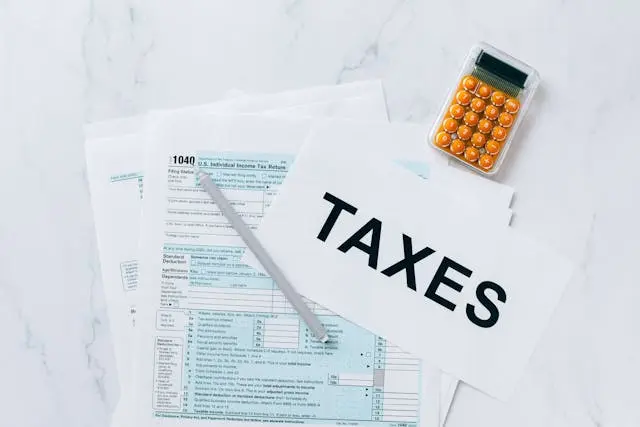[ad_1]
22
Increasing numbers of people are embracing the flexibility and autonomy of self-employment as the freelance economy continues to flourish. But being your own employer also entails the obligation to comprehend and effectively administer your tax affairs.
The optimization of tax savings and the precise submission of tax returns frequently present obstacles for freelancers. We will examine how freelancers can navigate the complexities of the 1099 tax system and delve into the fundamentals of self-employment tax forms in this guide.
In order to further assist freelancers with their tax planning, we will also present practical tools, including tax estimate calculators, freelance tax calculators, and self-employed tax calculators.
Comprehending the taxes for self-employment
In contrast to conventional employees, freelancers are classified as self-employed persons. They are obligated to remit Social Security and Medicare taxes on behalf of both the employer and the employee. Such a levy is generally known as the self-employment tax.
Social Security and Medicare each contribute 2.9% and 12.4%, respectively, to the current 15.3% self-employment tax rate. It is critical to specify, nevertheless, that the Social Security portion of the tax is imposed solely on income that exceeds a specific threshold.
Leveraging tax reductions
Optimizing their tax savings is a challenge encountered by freelancers. Freelancers must navigate the tax landscape independently, in contrast to employees who use employer-provided benefits and deductions. The following methods may assist independent contractors in reducing their tax liability:
1. Expenditures Deductible: Freelancers are permitted to deduct a wide range of business-related expenditures, including but not limited to a portion of their home office expenses, office supplies, equipment, software subscriptions, and marketing costs. To ensure accurate deductions, it is vital to maintain detailed recordings of these expenditures so that you don’t get an audit notice from the tax authority.
2. Retirement Investing: Freelancers have the opportunity to make contributions to retirement plans that are tailored to the needs of self-employed individuals. Examples of such plans include the Solo 401(k) and the Simplified Employee Pension (SEP) IRA. In addition to aiding in the financial stability of the freelancer, these contributions also qualify for tax benefits.
3. Healthcare Expenses: Health insurance premiums can be claimed as a business expense by freelancers, which may result in a potential reduction of their taxable income. For precise information on the limitations and prerequisites about health insurance deductions, it is imperative to seek the guidance of a tax expert.
4. Ongoing Tax Payments: In contrast to employees, freelancers are obligated to make estimated tax payments over the course of the year rather than having taxes deducted from their paychecks. Freelancers can prevent incurring penalties and interest charges by precisely calculating their tax obligations and diligently submitting payments.
Tax estimate calculators, self-employed tax calculators, and freelance tax calculators: Their practical applications
Voluntary tax preparers, self-employed tax preparers, and tax estimate calculators are a few of the online resources that freelancers may utilize to streamline the tax planning procedure. By utilizing their income, deductions, and other pertinent factors, these tools give independent contractors with precise approximations of their tax obligations. We shall delve deeper into these tools:
1. Tax Calculators Tailored for Freelancers and Self-Employed Individuals Freelance tax calculators are specifically designed for these groups. In generating an exhaustive assessment of the tax liability of freelancers, they take into account the distinct tax regulations and deductions that are applicable to this group. These calculators account for deductible business expenses, self-employment tax rates, and other variables.
2. Tax Calculators for Self-Employed Individuals: These calculators resemble those designed for freelance taxpayers, yet they are specifically designed to accommodate a wider demographic of self-employed people, including freelancers. For the purpose of estimating the overall tax liability, these calculators take into account a variety of self-employment income sources, including consulting, freelance work, and small business profits.
Freelancers who wish to project their tax liability for the forthcoming year can benefit from the utilization of tax estimate calculators. To provide an approximation of the freelancer’s tax obligation, these calculators consider variables including anticipated earnings, deductions, and modifications in tax legislation. Thus, freelancers can optimize their tax savings through prudent financial planning and implementing any required adjustments.
In summary
Freelancers may find it difficult to navigate the elaborate world of self-employment taxes. In contrast, freelancers can optimize their financial gains and guarantee precise tax submissions by acquiring a fundamental comprehension of self-employment tax forms and incorporating tax-saving tactics.
In addition, freelancers can obtain accurate estimates of their tax liability and streamline the tax planning process by utilizing online resources such as self-employed tax calculators, freelance tax calculators, and tax estimate calculators. Freelancers can effectively handle their tax affairs and concentrate on their core competency—their freelance work—by remaining well-informed and actively employing the resources above.
[ad_2]
Source link
